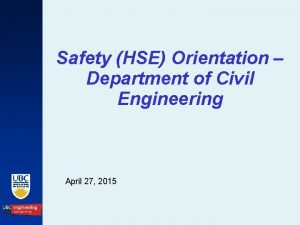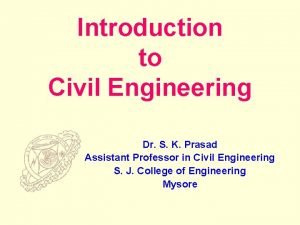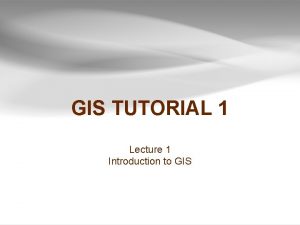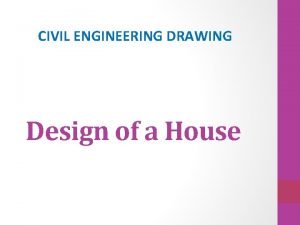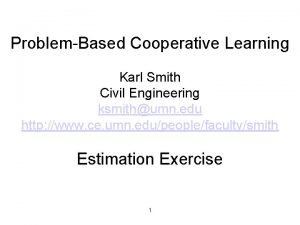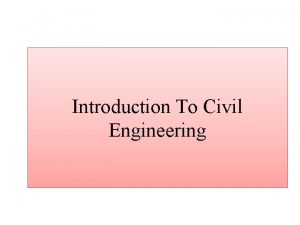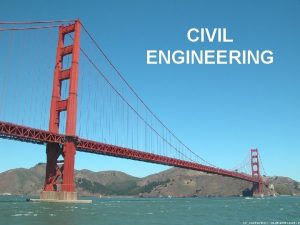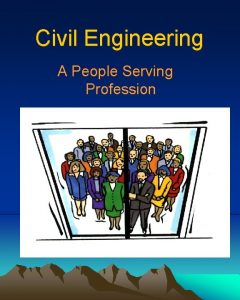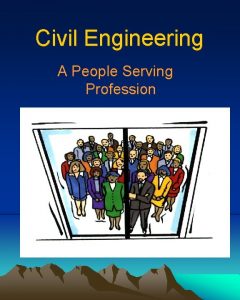Introduction to Civil Engineering What is a Civil












- Slides: 12

Introduction to Civil Engineering

What is a Civil Engineer? • One who improves the quality of life through the production of infrastructure and common utilities – Buildings, bridges and other structures – Highways – Dams and levees – Water treatment plants, waste disposal • This infrastructure must be safe, functional, elegant and economically sound

Why We Need Civil Engineers • Make sure our human habitat is livable • Make sure we use resources wisely – Sustainable development • Help maintain our competitiveness in the global economy – Increase productivity

Today we will focus on: Structural Engineering! (a sub-discipline of Civil Engineering)

Structural Engineering: • Carry out strength calculations to determine how much load a structure can withstand • Common structures: – Buildings – Towers – Bridges – Tunnels – Silos

What is a tower? • Arch Bridges A structure that is taller than it is wide, often by a significant margin. Height Highway 34 bridge, north of Plattsmouth, NE Width Distinct from buildings, because these are not made to be inhabited.

What are towers used for? . . . function (Mueller Tower at UNL Campus). . . function (Water Tower, Carmel Indiana)

What are towers used for? • . . . function Truss Bridges (Telecommunication Towers In India) Can you think of more examples of functional towers?

Tower uses Show (Space Needle, Seattle WA) Show/function: The leaning tower of Pisa, Italy, is a freestanding bell tower that leans at an angle of 3. 99 degrees

Design challenges: Support– towers taper as they go up, to reduce the amount of materials that need to be supported. Buckling—towers need to have stiff sides to avoid breaking under loads, especially due to wind. Dynamic—towers must also have design elements to cope with other movement, such as seismic disturbances. Often this means dampers on joints.

Activity: Paper Towers Goal: To build a free-standing paper tower at least 3 Feet Tall Materials: • Paper: • 20 sheets regular, • 4 sheets cardstock • Tape: 3 feet Constraints: • Must be free standing (can’t be taped to the ground or leaning against anything) • No other building materials allowed • You may not cut your paper. Folding and tearing is acceptable, however.

ANY QUESTIONS?
 Introduction to civil engineering
Introduction to civil engineering Civil rights and civil liberties webquest
Civil rights and civil liberties webquest Pele unsw
Pele unsw Hse in civil engineering
Hse in civil engineering Civil engineering completed risks
Civil engineering completed risks Tam grout
Tam grout What is formwork in civil engineering
What is formwork in civil engineering Role of civil engineering
Role of civil engineering Gis applications in civil engineering
Gis applications in civil engineering Faculty of civil engineering ctu prague
Faculty of civil engineering ctu prague Civil engg drawing house planning
Civil engg drawing house planning Bisection method application in civil engineering
Bisection method application in civil engineering Umn civil engineering
Umn civil engineering



